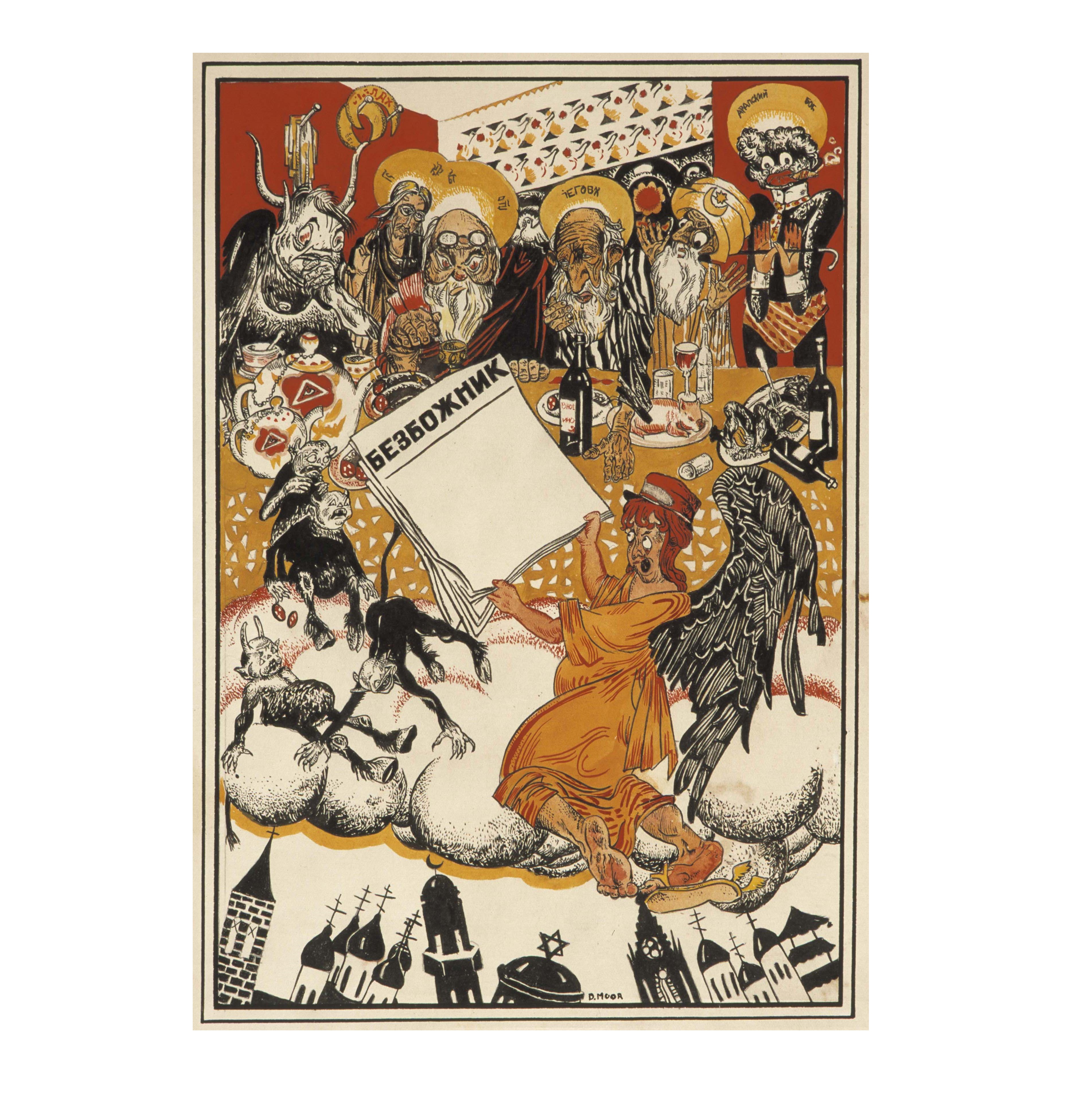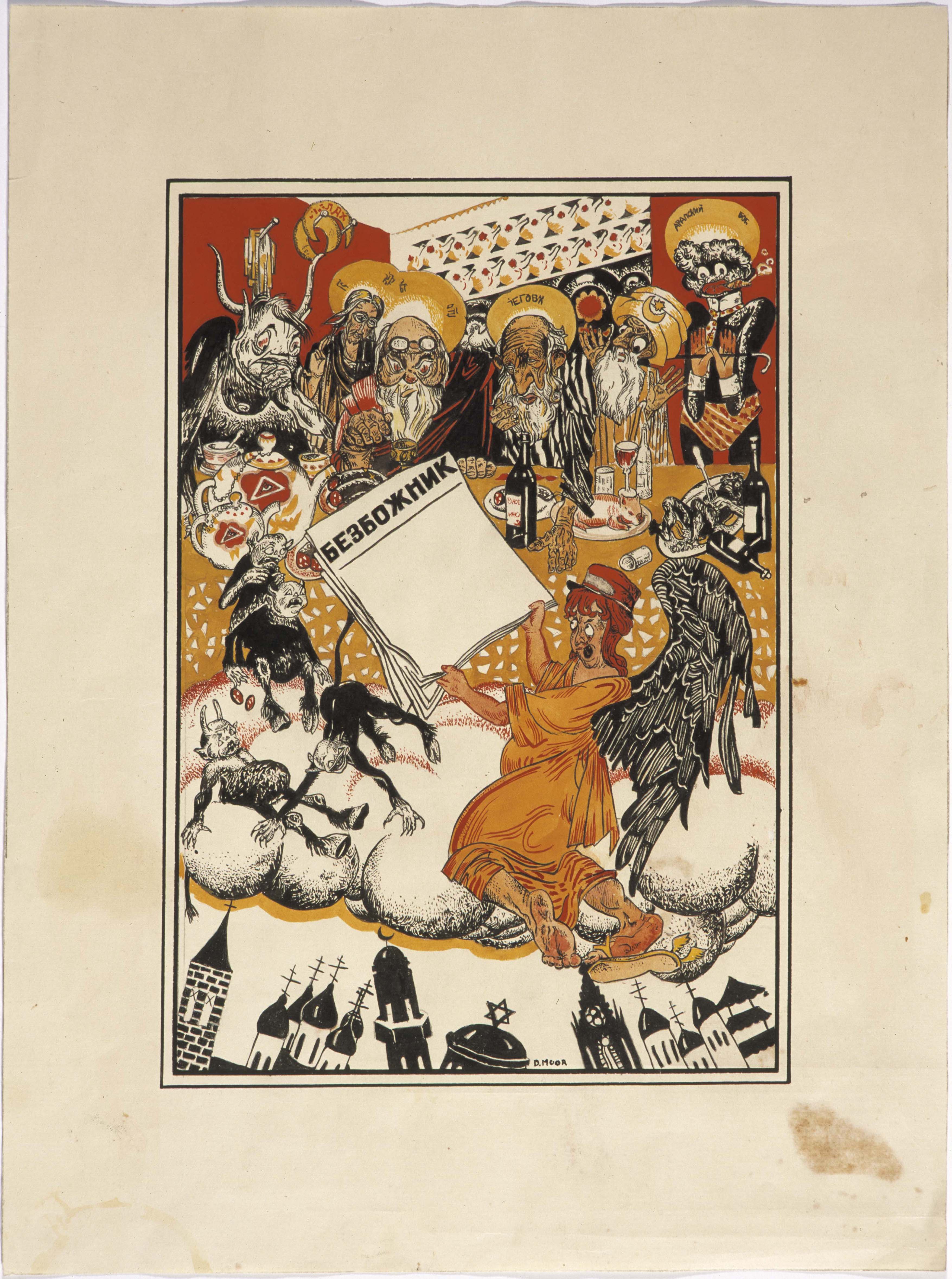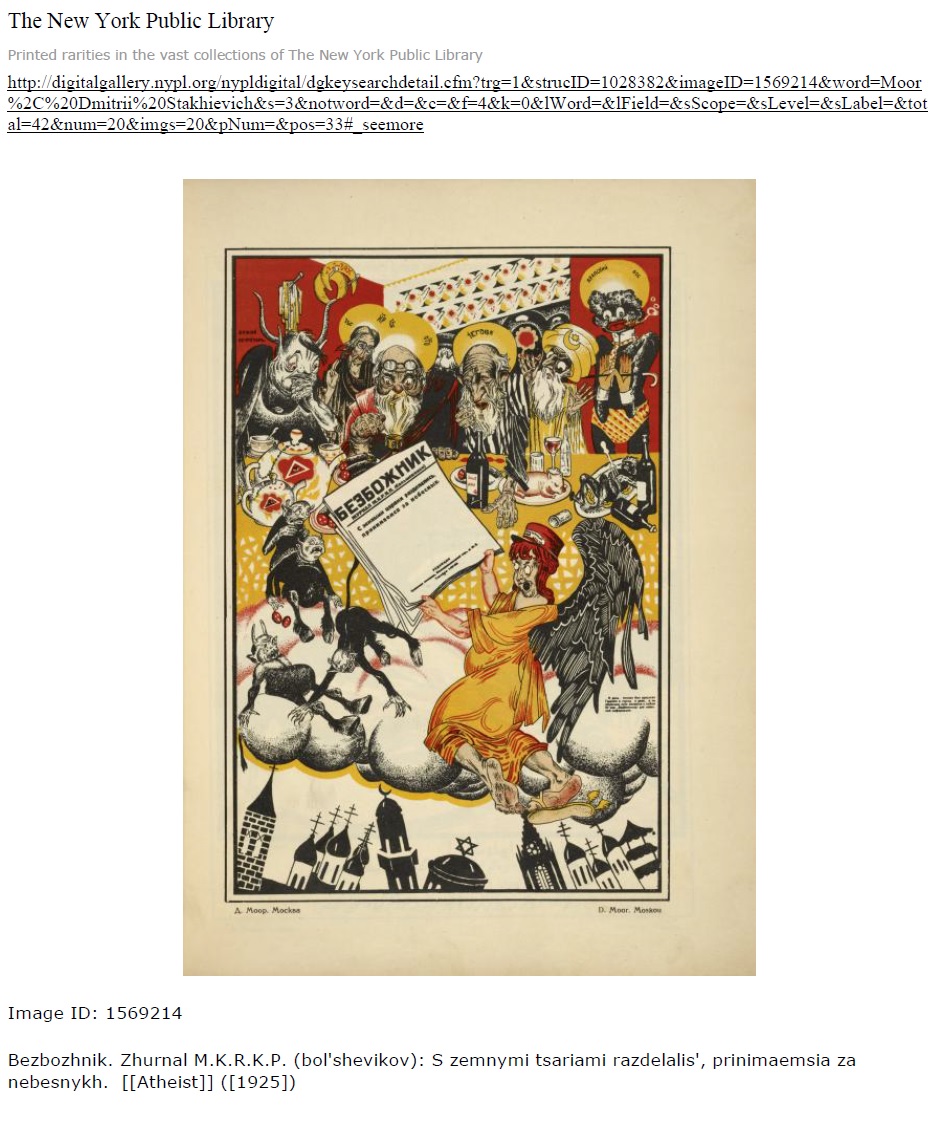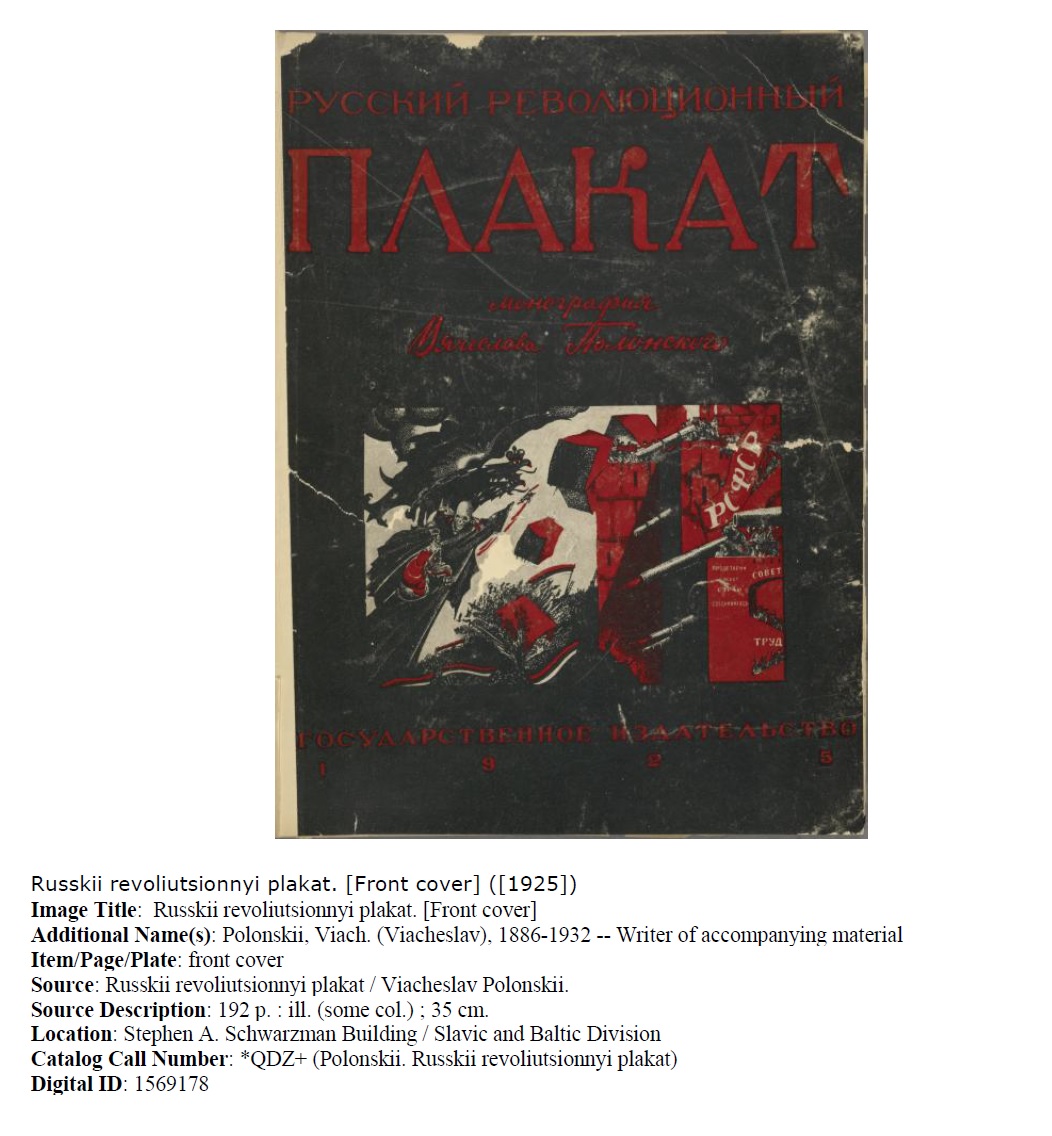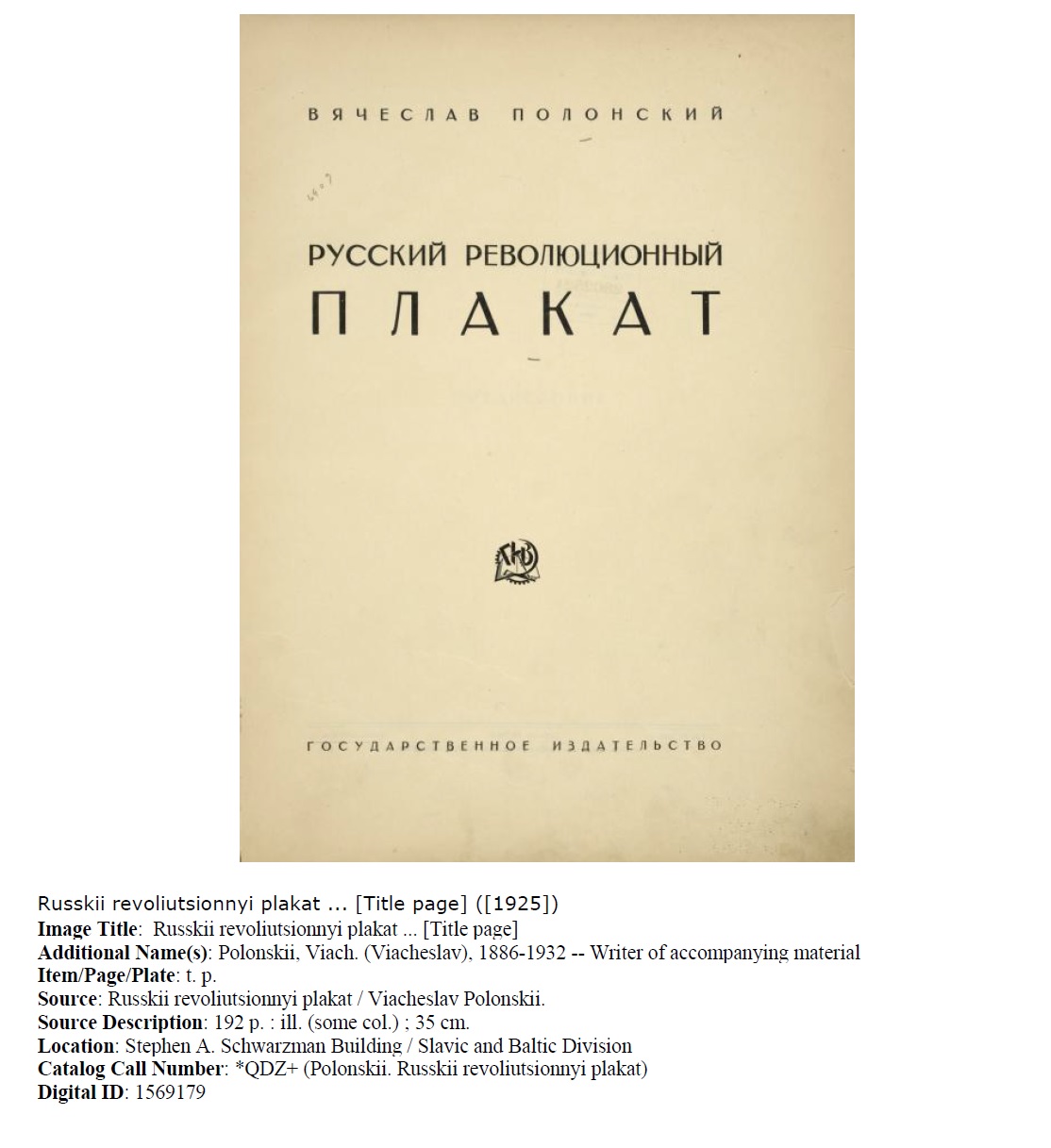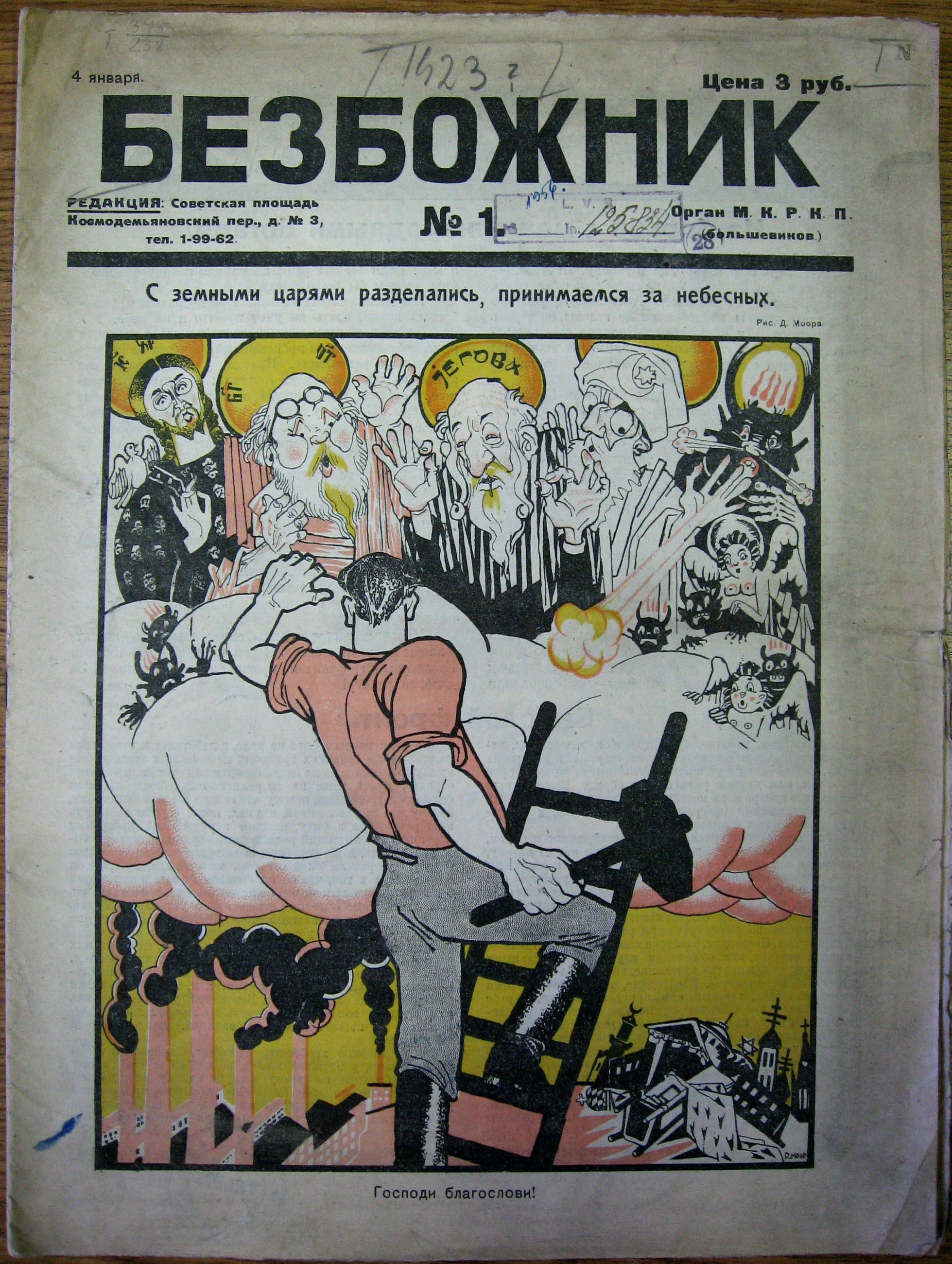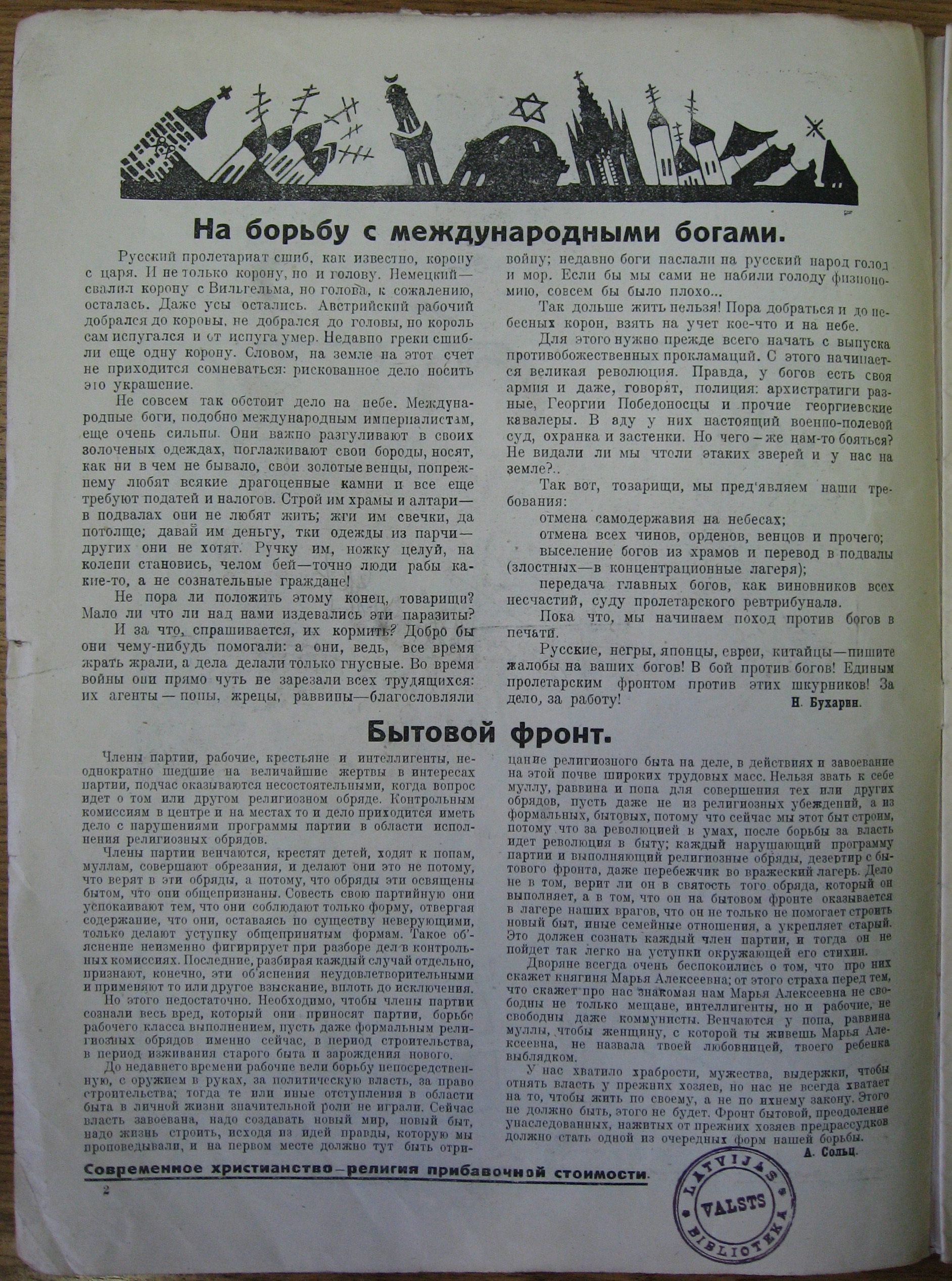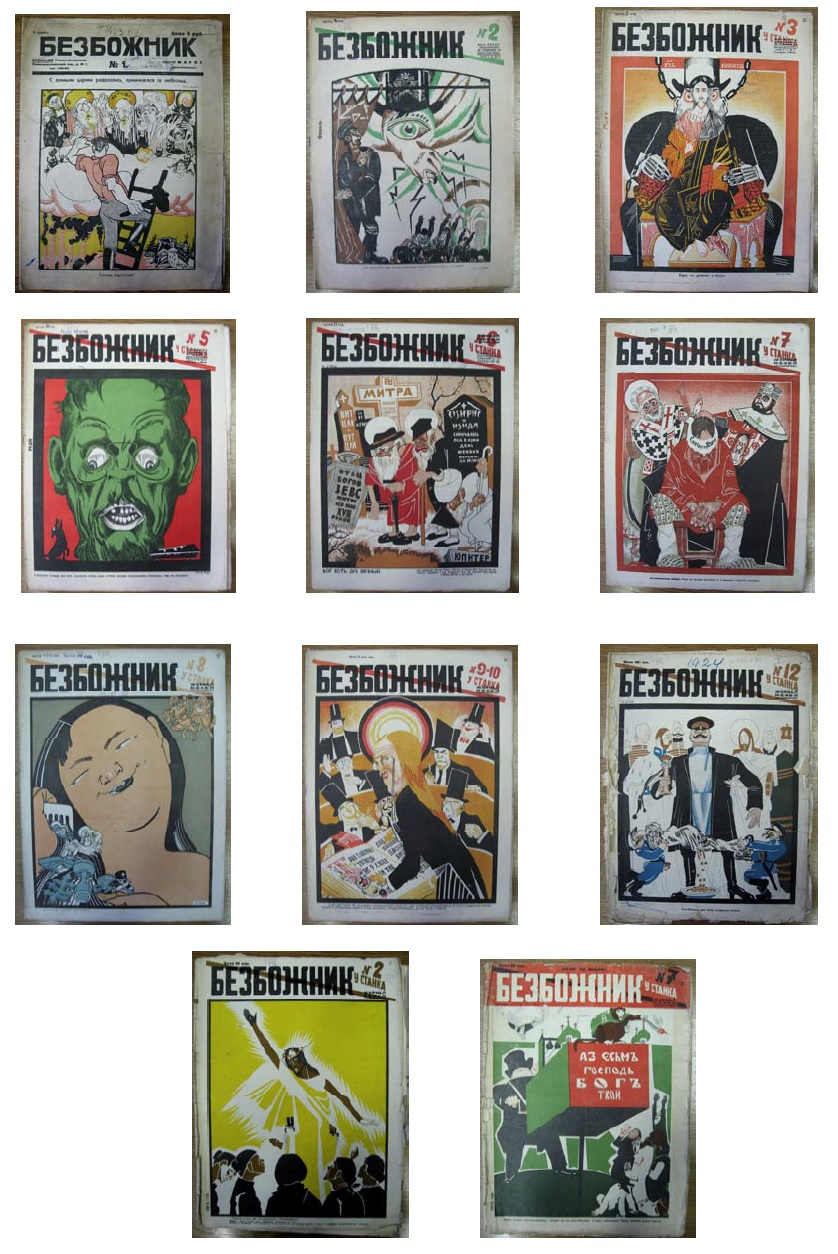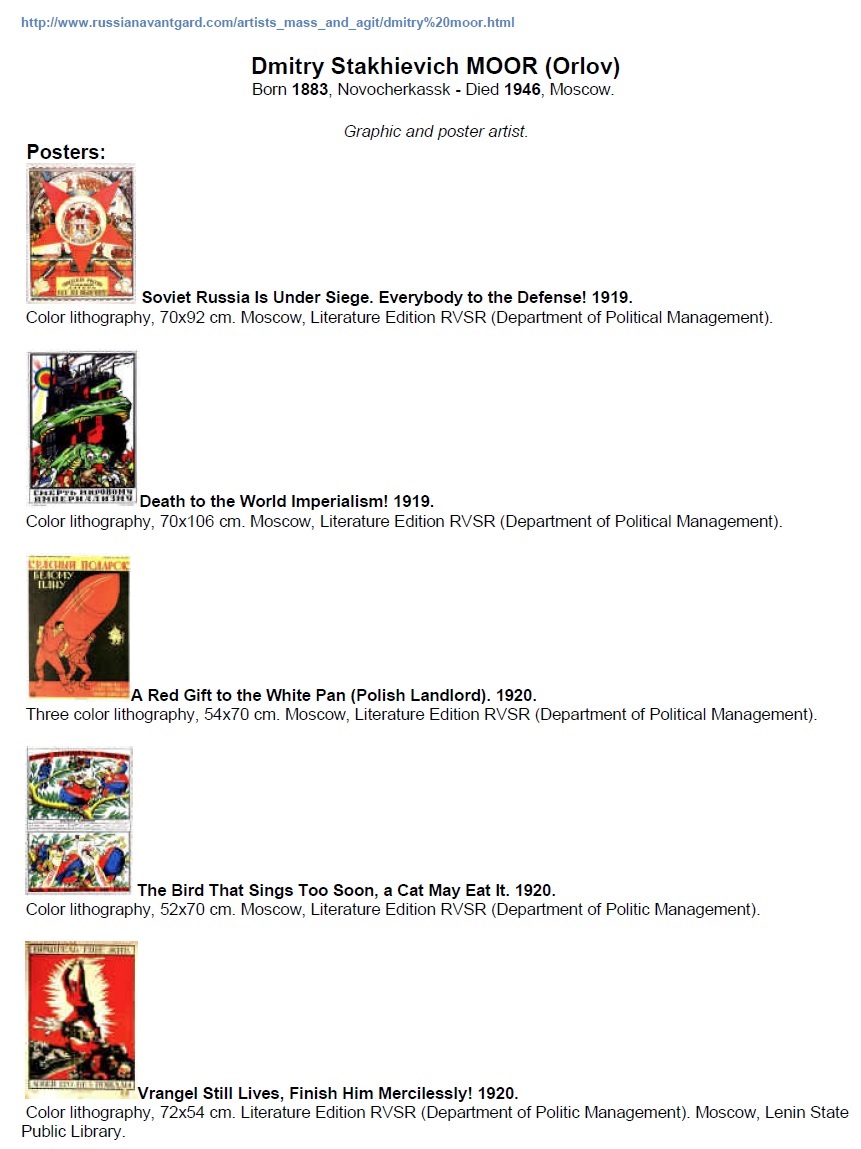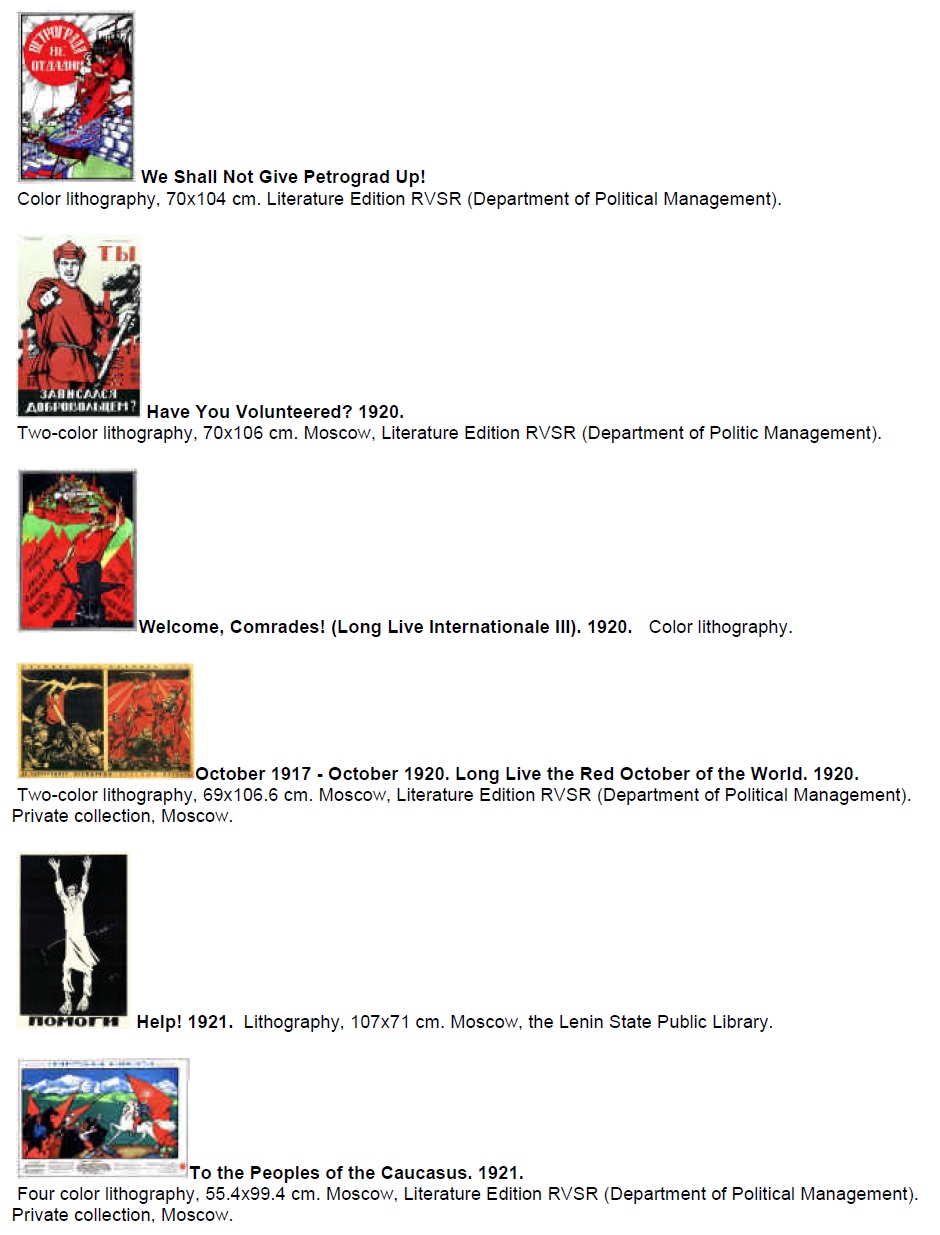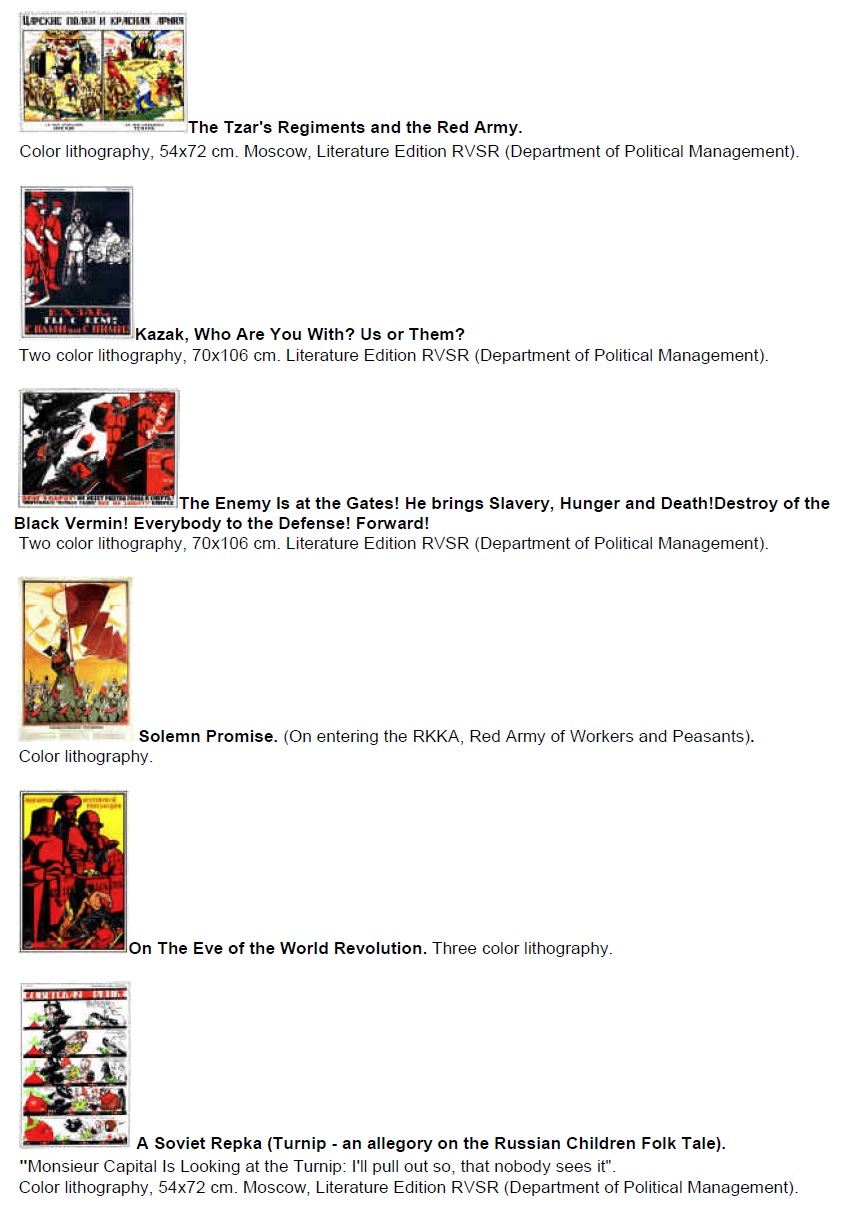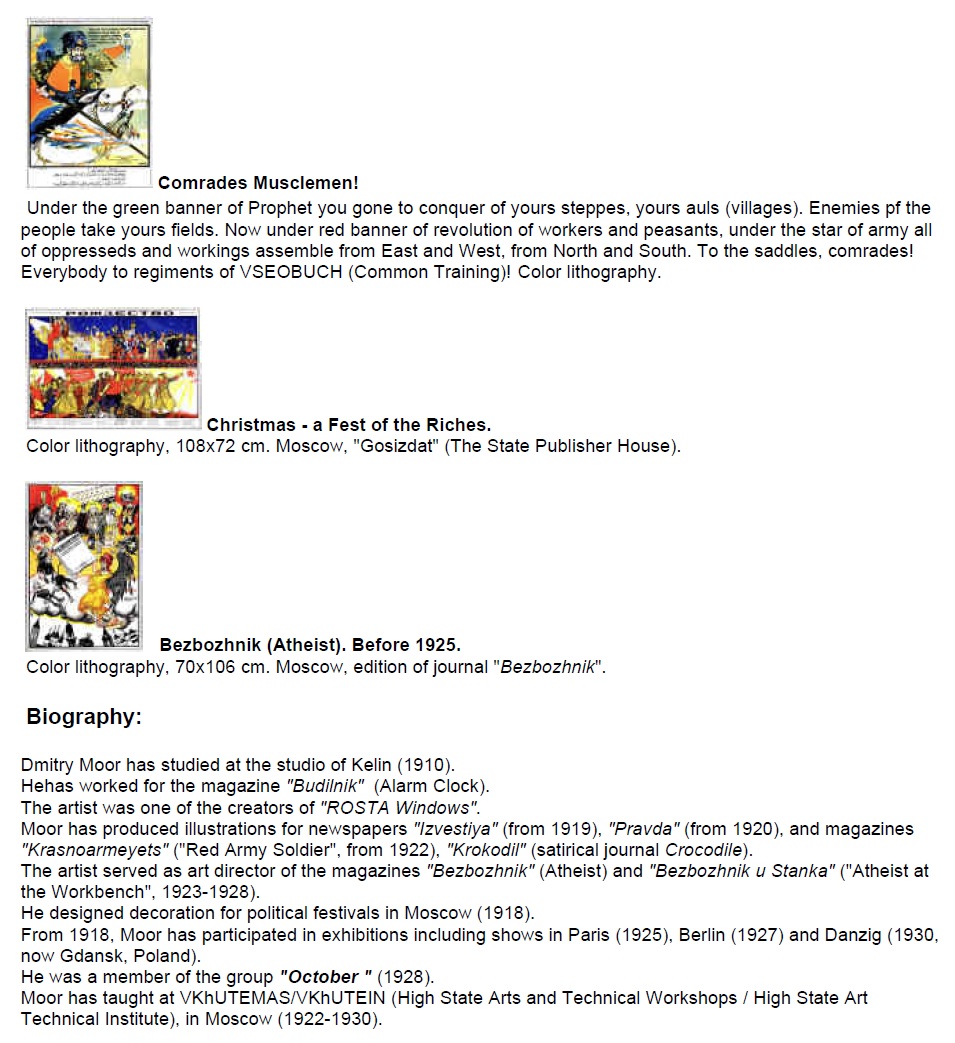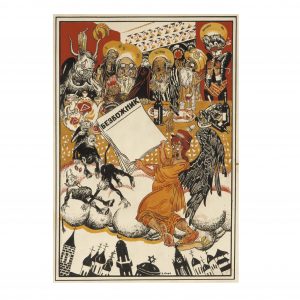MOOR (Orlov) Dmitry Stakhievich
1883 (Novocherkassk) — 1946 (Moscow)
Graphic artist, painter.
Dmitry Orlov was born to a family of mining engineer. In 1898 his family moved to Moscow. Orlov finished the gymnasium. Orlov studied at Moscow University, where he met revolutionary-minded youth; in 1905 he took part in preparation for Moscow Uprising of December 1905. He did not get systematic art education. In 1910s Orlov attended school-studio of P. I. Kelin.
Orlov lived in Moscow. In 1910s he worked for the Printing House of A.I. Mamontov, since 1917 — for the State Publishing House (Gosizdat).
Orlov worked as a caricaturist and poster artist. Since 1908 he published his satirical drawings in different periodicals, in particular in magazine Budilnik (“Alarm”), newspaper Russkoye Slovo(“Russian Word”), newspaper Utro Rossii (“The Morning of Russia”) under the pseudonyms Dor, Mor, and Moor. The artist together with Demyan Bedny participated in preparation of the magazine Volynka (“Bagpipes”), but the magazine was not permitted for publication by censor. He executed a series of caricatures Artists and Public Figures in Costumes (1912). Aside from satiric graphic art, the artist also created posters for advertisement, cinema and concerts. He executed posters for silent films The Thief, Burnt under the Sun, Litigation.
After the October revolution, Moor worked for the Windows of ROSTA (the Russian Telegraph Agency). He was also engaged in design of agitation trains. He executed posters Ty zapisalsya dobrovoltsem? (“Did you join us as volunteer?” 1920), Vrangel escho zhiv, dobey ego bez poschady!(“Vrangel is still alive — finish him off with no mercy!” 1920), Pomogi! (“Help!” 1921), Trudyaschiysya, bud’ nacheku! (“Worker, keep alert!” 1937), Chem ty pomog frontu? (“How have you helped the front?” 1941) and others.
Moor worked as a caricaturist for many newspapers, such as Pravda (“Truth”) since 1922, Izvestia, Komsomolskaya Pravda (“Komsomol Truth”, Komsomol is Communist Union of Youth) in 1920s–1930s, the magazine Krokodil (“Crocodile”) since 1922, Bezbozhnik u Stanka (“Atheist at the Machine”) in 1923–1928, U Stanka (“At the Machine”) in 1924–1925. The artist also created a series of caricatures Who They Are (1931) dedicated to political figures of Europe and America. The artist drew illustrations for several books: Riot by A. S. Serafimovich (1924), The Power of the Land by G. I. Uspensky (1929), Disputation by H. Heine (1929), Merry Stories from Holy History by A. Loginov (1930s), Under Fire: The Story of a Squad by H. Barbusse (1938), Khorosho! (“Good!” 1940), The Tale of Igor’s Campaign (1944) and others.
Moor took part in the exhibitions of the art circle Sreda (“Environment”; 1918), the 3rd State Exhibition of Painting (1919), the 1st Exhibition of Graphic Art (1926), the Exhibition of works on revolutionary and Soviet themes (1930), the exhibition Poster at the service of the five-year plan, Caricature in the service of the socialist formation (both — 1932) in Moscow. The artist also participated in the International exhibition of fine and decorative arts in Paris (1925), the Exhibition of Revolutionary Posters in Berlin (1927), the Exhibition of Graphic Works, Drawings, Posters and Books in Danzig (1930), the Exhibition of Soviet Graphic Art, Poster, Photography, Children’s and Art Book in Chicago (1932–1933). The artist joined the art society October in 1928; since 1930 he showed his works at the exhibitions of the society.
Moor taught at the Higher State Artistic and Technical Workshops (VKhUTEMAS) — the Higher Art Technical Institute (VKhUTEIN) at the lithography department in 1922–1930, at Moscow Polygraphic Institute at the poster department in 1930–1932, and at Moscow State Art Institute (MGKhI) in 1939–1943. His pupils were the Kukryniksy, A. M. Kanevsky, B. I. Prorokov, V. N. Goryaev, F. P. Reshetnikov and others. The artist headed poster department at the State Academy of Arts since 1931, and poster section of Moscow Regional Union of Soviet Artists (MOSSKh) since 1933.
Moor wrote a lot of articles on development of the Soviet political poster and caricature; he also wrote autobiographical essay I am Bolshevik (1967).
Dmitry Moor is one of the founders of the Soviet political poster. His works are characterized by expressive and grotesque drawing, with sharp outlines.
Works by Dmitry Orlov (Moor) are in many private and museum collections, including the State Tretyakov Gallery, the Pushkin State Museum of Fine Arts and others.
